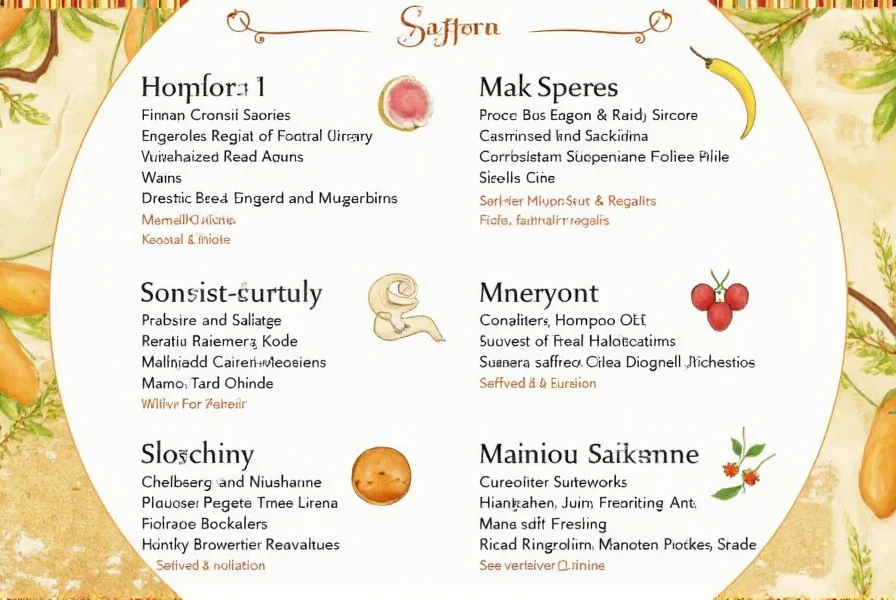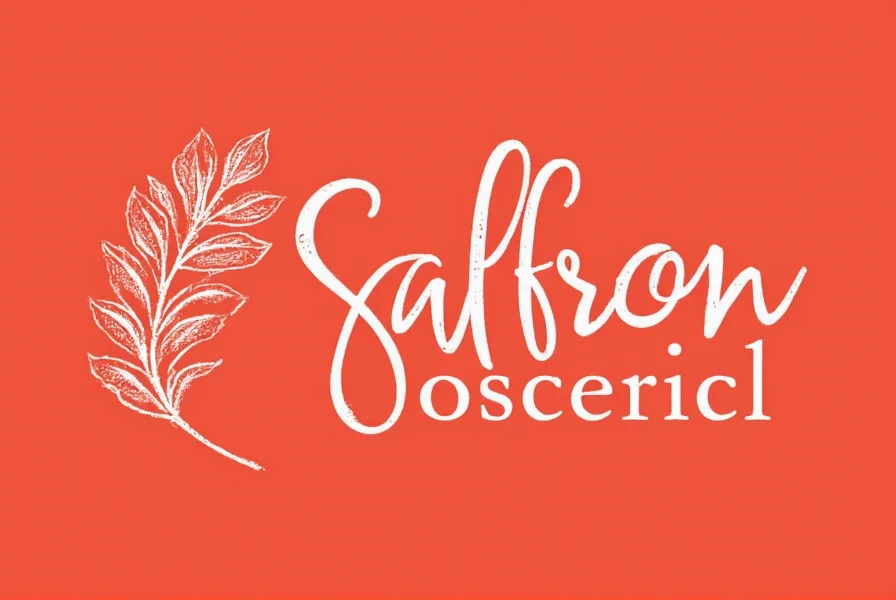Understanding what makes a saffron social menu distinctive requires examining both the culinary significance of saffron and the evolving trends in restaurant service models. Saffron, harvested from the delicate stigmas of Crocus sativus flowers, remains one of the world's most valuable spices by weight. Its unique flavor profile—earthy, floral, and slightly metallic—combined with its vibrant golden hue makes it particularly well-suited for dishes meant to be shared and admired.
The Evolution of Social Dining Concepts
Modern restaurants have increasingly moved away from traditional multi-course dining toward more flexible, communal experiences. Social menus represent this shift, offering curated selections of smaller portions designed for table sharing. When saffron features prominently in these menus, it often serves as both a flavor component and visual centerpiece.
Restaurants specializing in Mediterranean, Middle Eastern, or South Asian cuisines frequently incorporate saffron into their social menu offerings, as the spice has deep cultural roots in these regions. Spanish tapas bars might feature saffron-infused patatas bravas, while Persian restaurants often present saffron rice dishes designed for communal serving.
Key Elements of an Effective Saffron Social Menu
Crafting a successful saffron social menu requires careful consideration of several elements that enhance the communal dining experience:
| Menu Element | Importance for Social Dining | Saffron Application Example |
|---|---|---|
| Portion Size | Ideally 30-50% of standard entrée size | Saffron-infused seafood paella bites |
| Visual Appeal | Creates shareable moments and photo opportunities | Golden saffron risotto with edible flowers |
| Flavor Balance | Prevents palate fatigue when sampling multiple dishes | Saffron lemonade with subtle spice notes |
| Interactive Components | Encourages engagement among diners | DIY saffron flatbread with dipping sauces |
Saffron's Culinary Significance in Social Settings
Saffron's unique properties make it particularly well-suited for social menus. Unlike many spices that dominate a dish, saffron offers a subtle complexity that complements rather than overwhelms. This characteristic allows multiple saffron-infused dishes to appear on the same menu without creating flavor conflicts.
Professional chefs note that saffron's visual impact significantly enhances the social dining experience. The vibrant golden color creates immediate visual interest, making dishes naturally photogenic and conversation-worthy. When multiple saffron-hued dishes appear on a table simultaneously, they create a cohesive visual theme that enhances the overall dining aesthetic.

Regional Variations in Saffron Social Menus
Different culinary traditions incorporate saffron into social menus in distinctive ways:
- Middle Eastern cuisine: Features saffron in rice dishes like Persian tahdig (crispy rice) served family-style
- Mediterranean cuisine: Incorporates saffron into seafood stews and paella designed for communal serving
- South Asian cuisine: Uses saffron in biryanis and desserts presented in large platters for sharing
- Modern fusion: Creates innovative small plates like saffron-infused cocktails and tapas
When developing a saffron social menu, restaurants must consider the quality of saffron used. Authentic saffron should have a deep red color with minimal yellow styles, indicating higher concentrations of crocin (responsible for color) and safranal (responsible for aroma). Lower quality saffron may produce dishes that lack the distinctive flavor and visual impact essential for a memorable social dining experience.
Practical Considerations for Diners
For those seeking restaurants with saffron social menus, several factors enhance the experience:
- Look for establishments that specify the origin of their saffron (Iranian, Spanish, or Kashmiri typically indicate higher quality)
- Consider the season—saffron menus often feature prominently during fall and winter months
- Ask about portion recommendations based on party size to optimize the sharing experience
- Be aware that authentic saffron menus may carry premium pricing due to the spice's high cost
Understanding menu descriptions helps identify genuine saffron usage. Terms like "saffron-infused," "saffron-kissed," or "with saffron" typically indicate the spice plays a significant role, while vague references might suggest minimal usage. Restaurants committed to quality saffron presentation often provide information about their sourcing practices.

Creating Memorable Social Dining Experiences
The most successful saffron social menus go beyond simply featuring the spice—they create cohesive experiences where saffron connects multiple elements of the meal. Some innovative restaurants pair saffron-infused dishes with complementary beverages, create thematic progression through the menu, or incorporate saffron into unexpected elements like desserts or cocktails.
For restaurant operators, developing a compelling saffron social menu requires balancing authenticity with accessibility. While traditional saffron dishes appeal to knowledgeable diners, creative interpretations can introduce the spice to new audiences. The key lies in maintaining saffron's distinctive qualities while adapting presentation to contemporary social dining preferences.
Frequently Asked Questions
What distinguishes a saffron social menu from regular restaurant menus?
A saffron social menu specifically features dishes designed for sharing that prominently incorporate saffron as a key ingredient. Unlike regular menus, these are structured with smaller portions intended for communal dining, where saffron's distinctive color and flavor create a cohesive visual and taste experience across multiple shareable plates.
Why is saffron particularly well-suited for social dining menus?
Saffron works exceptionally well in social menus because of its vibrant golden color that creates visual appeal across multiple dishes, and its subtle flavor profile that complements rather than dominates. This allows several saffron-infused dishes to be enjoyed together without palate fatigue, making it ideal for sharing experiences where multiple flavors are sampled.
How can diners identify authentic saffron usage on a social menu?
Look for specific references to saffron quality or origin on the menu, such as "Iranian saffron" or "hand-harvested saffron threads." Authentic usage typically describes how saffron enhances the dish rather than just mentioning it. Restaurants committed to quality saffron often provide information about their sourcing practices and may even showcase the saffron during service.
Are saffron social menus significantly more expensive than regular menus?
Saffron social menus often carry a premium due to saffron being one of the world's most expensive spices by weight. However, the cost difference varies by restaurant. Some establishments incorporate saffron strategically in key dishes rather than throughout the entire menu, while others may offer saffron as an optional enhancement. The social menu format itself—featuring smaller portions—can sometimes make the overall experience more cost-effective for groups.
Which cuisines most commonly feature saffron in social menu formats?
Middle Eastern (particularly Persian), Mediterranean (especially Spanish), and South Asian cuisines most commonly incorporate saffron into social menu formats. Persian restaurants often feature saffron rice dishes designed for sharing, Spanish establishments present saffron-infused paella in social portions, and South Asian restaurants offer saffron biryanis and desserts in communal presentations.











 浙公网安备
33010002000092号
浙公网安备
33010002000092号 浙B2-20120091-4
浙B2-20120091-4